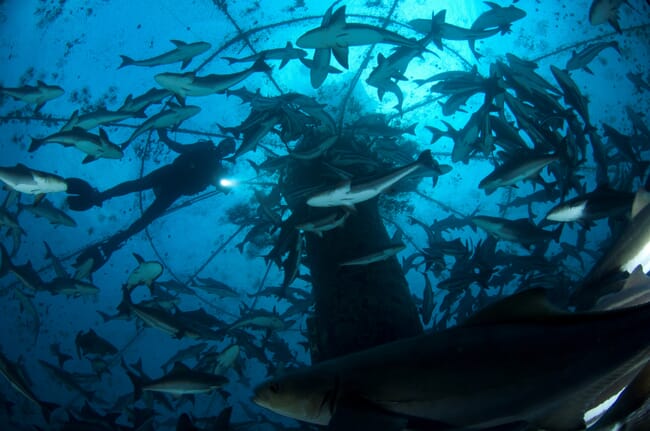
© Open Blue
“Investing with your heart is not a very good starting point,” DNB Bank’s Dag Sletmo told delegates during the World Ocean Summit in March. During a panel discussion with Suzanne Johnson of the UN Global Compact and Grant Cavanaugh from Scoot Science, Sletmo highlighted the relationship between quality ocean data and financial investment that will help ocean industries reach their productivity and climate targets.
Though there was wide acknowledgement of the need for “blue finance” – generating, investing and targeting financial capital to achieve sustained ocean health and governance – the panellists conceded that this area is lagging other green investments. Industry insiders often point to the limited pipeline of bankable blue projects, but Sletmo, Johnson and Cavanaugh say that the issue runs deeper. In their view, ocean industries are not collecting enough data to allow financiers to create investment opportunities.
The panellists noted that existing ocean data is not always transparent, consistent or standardised across regions. Furthermore, regulatory frameworks that govern ocean industries are often shaky. These persistent data gaps and lack of governance leave investors in the dark – they don’t have enough information to model and predict financial risks. This makes them wary to give blue industries the capital they need to meet their potential. To address this challenge, the panellists called on ocean industries to share their data and work to improve its quality. If ocean data can become more trusted and transparent, and if regulators can tame the unknown, blue industries like sustainable aquaculture could court the private sector financing it needs to meet its goals.
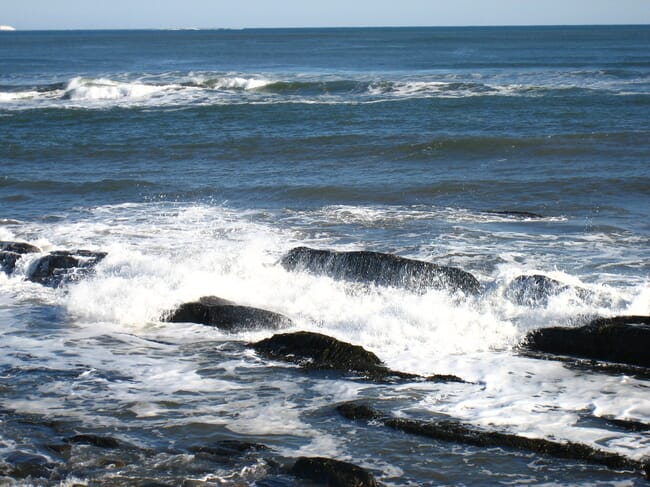
© Commensa Family
Turning the tide on ocean investment
The financial community is beginning to recognise ocean industries like aquaculture as a potential strategy for climate adaptation and resilience – and this new attention comes just as maritime industries are embracing big data and other technologies in their day-to-day activities. Satellites, remote sensors, artificial intelligence and other big data solutions are revolutionising ocean industries and providing real-time and accurate data on the marine environment and farm activity.
Generating this type of data should be a win-win for aquaculture and for financing. The information can help lenders assess and de-risk their offerings and facilitate better management decisions at farm sites. However, to date, many sources of ocean data can’t give the financial community what it needs to create investment options.
In Johnson’s experience as an advisor to the UN Global Compact and with Lloyd’s Register, the financial community is becoming more aware of the need to safeguard the ocean, telling delegates that, “healthy oceans drive our economies.”
“The world is dependent on a healthy, productive and resilient ocean to help us address climate mitigation and adaptation [along with] food security, trade and so many of our livelihoods,” she said. Financing and cultivating the blue economy makes good business sense and is becoming more essential as the decade progresses. She said that investing in our oceans can jumpstart sustainable development initiatives in coastal communities and can begin to address many of the economic inequalities and environmental stressors stemming from climate change.
Who is financing the blue economy?
Despite the need for this type of investing, Johnson, Sletmo and Cavanaugh conceded that to date, spending on the ocean has been inadequate. Of the 17 Sustainable Development Goals, SDG 14 – which governs “life under water” – is the least-funded of the SDGs. Johnson told delegates that the SDG 14 needs $175 billion a year to meet its 10 outcome targets, but only $25 billion is being spent. She also noted that that only 8 percent of the current investment comes from the private sector. In her view, blue finance needs to become more attractive to the private sector to gain traction.
As it stands now, blue finance is largely dominated by philanthropic and governmental bodies that have a focus on environmental, social and governance (ESG) investing. Though this is spurring some growth, Johnson observed that the existing figure is dwarfed by spending in the private sector. She explained that c-suite executives often spend trillions of dollars each year on their corporate funding campaigns. As there is an increasing push at these institutions to begin focusing on ESG investments, sustainable aquaculture, blue carbon and other ocean industries should be prime candidates for their attention.
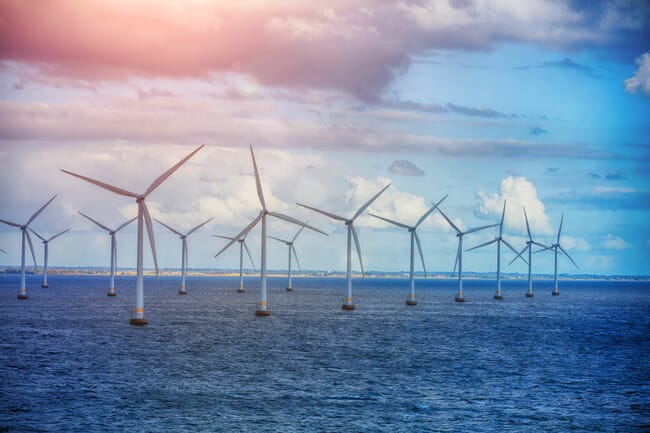
However, the panellists noted that many investment options in the space don’t have the right liquidity and don’t generate sufficient returns for stakeholders. This makes it difficult to pitch them as a way to build wealth – even if they fall within the ESG category.
What are the oceans’ data challenges?
According to Sletmo, any type of investment has to be data driven – including those classed under the ESG umbrella. Since vast areas of the oceans are underexplored and regulations on data collection can be patchy, it’s difficult for stakeholders to get a complete picture of the systems they operate in. The fact that ocean industries like aquaculture are relatively new and face increased public scrutiny is an additional challenge. It’s also one that terrestrial agriculture doesn’t have to face.
In Cavanaugh’s view, terrestrial farmers have more tools at their disposal for generating data and creating models. Sensors that measure simple indicators like water quality or weather forecasts are established mainstays for the swine and poultry industry. These indicators and production models well understood by the financial community. Fish farms and other maritime sectors don’t have the same advantage. Though Atlantic salmon farming is the exception, the wider aquaculture industry is only beginning to build and adopt electronic monitoring tools now. This makes it difficult for financiers to model and understand the industry’s risks.
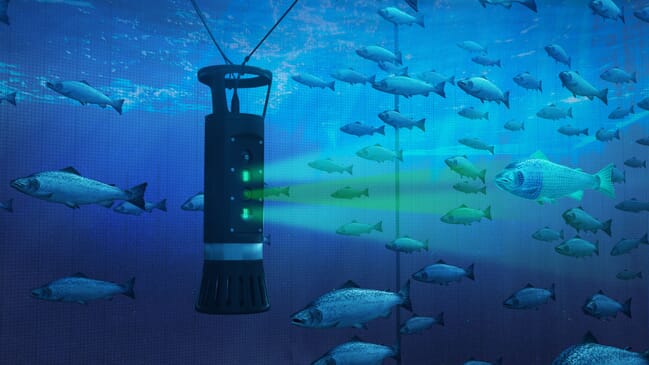
When it comes to the ocean data itself, the panellists noted that many datasets are incomplete and aren’t standardised. Ocean indicators don’t have consistent definitions either, further complicating matters. This means that organisations and companies that want to engage with the data face a steep learning curve.
Cavanaugh went on to explain that even in cases where there are excellent ocean data sets – like in the Atlantic salmon industry – the information isn’t enhanced or deconflicted. The aquaculture sector has been tracking core ocean variables for decades, but the next steps of unifying the datasets and triangulating them to including insights from related fields like oceanography hasn’t happened. This has prevented the data from generating value for investors – making the industry less attractive despite its wealth of opportunities.
Structuring ocean data to make an impact
Improving the quality and accessibility of existing ocean data is essential if it is going to feature in investment portfolios. In the panellists’ view, sharing and harmonising the data across ocean industries is a crucial first step. Sletmo told delegates that this will improve their financial prospects and help with initial de-confliction efforts. “It’s really important to be approximately right everywhere, rather than precisely incorrect somewhere,” quipped Cavanaugh.
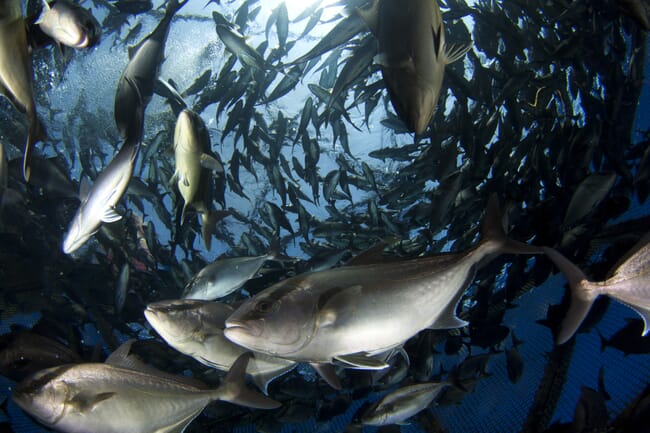
© Jeff Milisen
Echoing this point, Johnson suggested that datasets should democratised between the Global North and Global South. This would make major progress in addressing data gaps between the two regions. Investors are currently using proxy ocean data to assess their holdings in the Global South. This won’t be workable long-term. If left on their current trajectories, ocean industries risk creating an abundance of data in the Global North, where it is least required, while ignoring calls for collection in the Global South, where it is most needed. Johnson stressed that the data generation and sharing should be equitable and consistent between regions.
Johnson went on to outline potential focus areas for aquaculture and ocean industry data. First, she suggested that leaders in the space shine a light on the existing data gaps – whether they were from the Global South, the open ocean, Arctic environments or the deep sea. After these gaps have been identified, data should be collected in an open-source format to facilitate further analysis and exploration.
She also suggested that the sector explore a digital ocean twin – a metaverse version of the ocean where researchers can visualise scenarios and analyse marine variables. She explained that, “…having a metaverse for the ocean will enable us to model and make financial scenarios and enable analysis on a changing ocean [environment]”. An ocean metaverse will also let us illustrate and record potential interactions between humans and the marine environment. This will help create valuable conservation and productivity targets for the aquaculture industry.
If ocean industries commit to these efforts, they will be able to present standardised measurements to financial institutions. This will make their assets directly comparable with more familiar industries like agriculture – helping them bridge the current investment gap. It will also shift blue industry portfolios away from philanthropic and governmental bodies and court more private sector buy-in.
Sletmo concluded by telling listeners that ocean data will be tremendously powerful – but it will take a while for things to gain traction with the financial community. In the meantime, investing and prioritising data generation will help the aquaculture industry gain a better understanding of fish biology, the farm environment and how their businesses operate in the marine ecosystem. Taking a broader view, the new data can help set workable standards for the industry and inform environmental regulations. This will bring ocean industries in line with their terrestrial counterparts and could, potentially, turn the tide on blue finance.
The Economist World Ocean Summit was held from 1 to 4 March.




